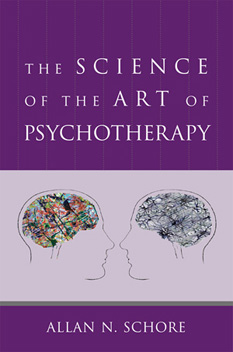 The latest work from a pioneer in the study of the development of the self.
The latest work from a pioneer in the study of the development of the self.
Focusing on the hottest topics in psychotherapy—attachment, developmental neuroscience, trauma, the developing brain—this book provides a window into the ideas of one of the best-known writers on these topics. Following Allan Schore’s very successful books on affect regulation and dysregulation, also published by Norton, this is the third volume of the trilogy. It offers a representative collection of essential expansions and elaborations of regulation theory, all written since 2005.
As in the first two volumes of this series, each chapter represents a further development of the theory at a particular point in time, presented in chronological order. Some of the earlier chapters have been re-edited: those more recent contain a good deal of new material that has not been previously published.
The first part of the book, Affect Regulation Therapy and Clinical Neuropsychoanalysis, contains chapters on the art of the craft, offering interpersonal neurobiological models of the change mechanism in the treatment of all patients, but especially in patients with a history of early relational trauma. These chapters contain contributions on “modern attachment theory” and its focus on the essential nonverbal, unconscious affective mechanisms that lie beneath the words of the patient and therapist; on clinical neuropsychoanalytic models of working with relational trauma and pathological dissociation: and on the use of affect regulation therapy (ART) in the emotionally stressful, heightened affective moments of clinical enactments.
The chapters in the second part of the book on Developmental Affective Neuroscience and Developmental Neuropsychiatry address the science that underlies regulation theory’s clinical models of development and psychopathogenesis. Although most mental health practitioners are actively involved in child, adolescent, and adult psychotherapeutic treatment, a major theme of the latter chapters is that the field now needs to more seriously attend to the problem of early intervention and prevention.
Book review: The Science of The Art of Psychotherapy – By Martha Stark, M.D. (PDF)
The Science of The Art of Psychotherapy is a must-read for health professionals and interested lay persons alike because, although ostensibly about affect, attachment, the right brain, mutuality, and interactive regulation, it is ultimately a book about what it means to be human and how it is that we can be deeply and meaningfully connected to others.
Reprinted with permission from the author. Originally printed in Psychoanalytic Psychology, 2015, Vol. 32, No. 1, 228-234. (link to APA site)
Martha Stark, M.D.
Harvard Medical School, Boston, Massachusetts.
One would be hard pressed to find another book so extensively filled with an up-to date and extensive review of contemporary studies on the affective and neuroscience literature related to psychotherapy and psychoanalysis as this. This work will likely be a major reference source for those interested in understanding the brain-mind body relationships, particularly in the two-person model, focused on the dissociative process, and the autonomic nervous system concomitants.
The Journal of Analytical Psychology
I would recommend The Science of the Art of Psychotherapy to child psychiatry/psychology fellows, psychoanalysts, family therapists, . . . neuroscience majors, psychology students at all levels of training, and any student of attachment therapy.
Journal of Psychiatric Practice
[S]chore’s contribution continues to be invaluable. He voraciously digests the hard science on our behalf, and shows us over and over again that the evidence is there, and that this really matters.
Therapy Today